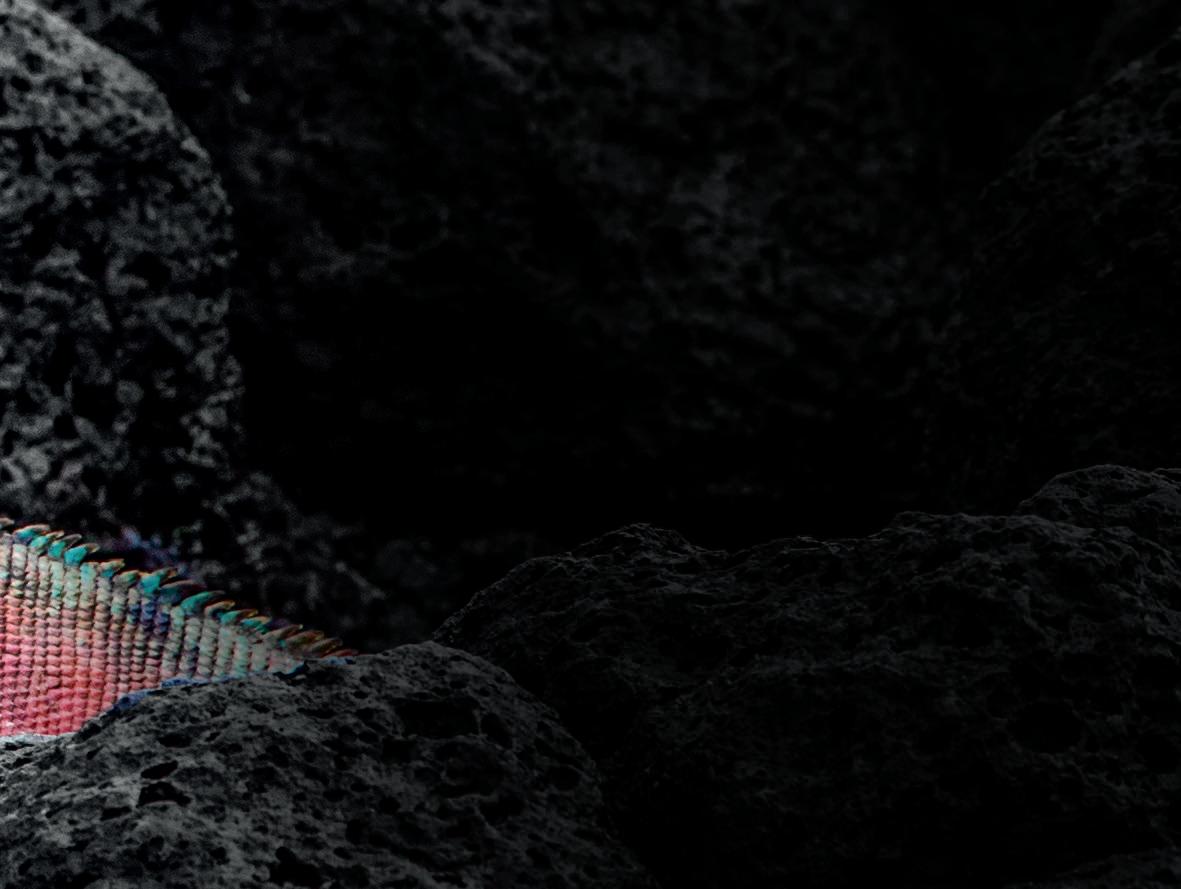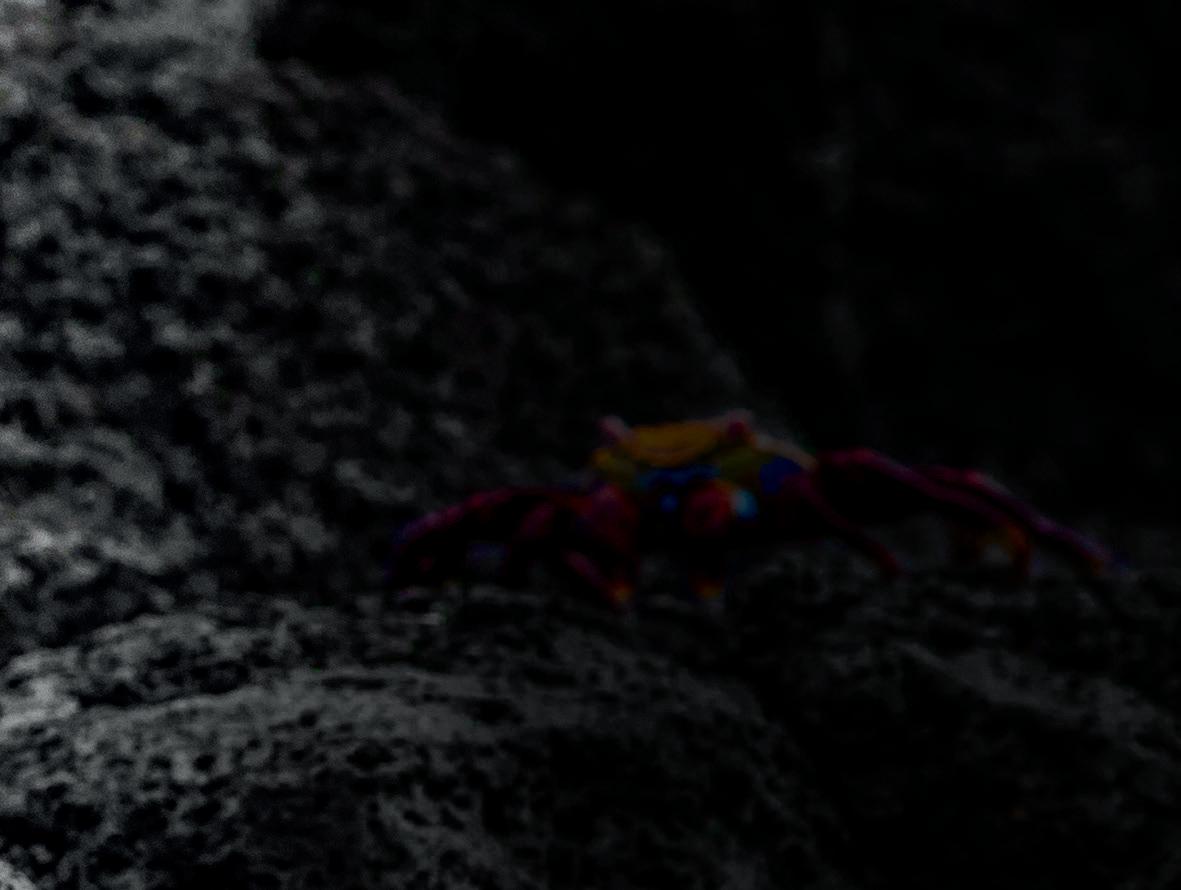
8 minute read
JURASSIC WORLD
A Living Museum in the Pacific.
By Hannah Rudd
Advertisement
Hundreds of miles off the coast of South America, lies a chain of islands that resemble a living museum. First discovered in 1535, the Galápagos Islands are a world-famous archipelago that are revered by biologists the world over.
They have been the focal point of humanity’s understanding of the natural world and have marked their place in natural history through being the birthplace of Darwin’s theory of evolution by natural selection following his visit in 1835.
What makes this rugged landscape so biologically enticing, both above and below the waves, is its raw uniqueness. Because of the island’s remoteness, many species have evolved through speciation and so are found nowhere else on the planet – termed ‘endemism’. Indeed, the Galápagos Islands are home to some of the highest levels of endemism in the world. Here you will find gigantic Galápagos tortoises (Chelonoidis .spp), prehistoric marine iguanas (Amblyrhynchus cristatus), and the charming Galápagos penguin (Spheniscus mendiculus) – to name just a few. Approximately 97% of the reptiles and land mammals, 80% of the birds and more than 30% of the planets found on the islands are endemic, according to the Galápagos Conservancy. The archipelago offers a precious insight into the inner workings of the natural world and is an irreplaceable treasure on Earth.
The Marine Iguana –A Dinosaur in the Modern Age
Take a look along the rocky shores of the many islands that make up the Galápagos archipelago and you are sure to find a colony of creatures that resemble Godzilla. Found only on the Galápagos Islands, the marine iguana is a sight to behold. Being the only lizard on Earth that spends time in the ocean, they are an iconic species that have adapted to life in the hostile environments of the Galápagos.
In fact, sub-populations on these remote islands have been isolated for so long that each island has evolved its own subspecies with each having an individual pattern that combines shades of red, green, black, and grey. As they mature, their colouration becomes more vivid, particularly during the breeding season. Living for twelve years on average, but known to live as long as sixty years, marine iguanas reproduce by laying a clutch of two to three large eggs which hatch between two and a half and four months later.
Despite their fierce appearance, marine iguanas are herbivores that survive exclusively on underwater red and green algae, and seaweed. With a short, blunt nose, they are well-adapted to feeding on the algae growing on underwater rock faces. On occasion, marine iguanas have been observed to feed on crustaceans and grasshoppers, as well as terrestrial vegetation, although this is typically in times of food scarcity. They have a remarkable ability to swim in both subtidal and deeper, icy cool waters to feed. Their flattened tail provides extra propulsion and their legs hugging their body offers improved water dynamics so they can glide through the water with ease. Charles Darwin noted in his expedition log aboard the HMS Beagle that marine iguanas moved using a ‘serpentine movement, like an eel’ and commended their elegant appearance in the water. But it wasn’t always this way. When their ancestors washed ashore on the Galápagos, they were solely land-dwelling creatures. It was only through necessity that they evolved the ability to traverse the ocean in search of food.
Like other reptiles, marine iguanas are ectothermic, meaning that they rely on the warmth of their environment to heat their bodies. Despite their remarkable adaptations, a 10-minute dive is approximately the longest they can manage in the cool depths of the Pacific Ocean before they begin to lose control of their muscles. Once at the surface, the marine iguana must then fight the perilous surge as it crashes against the coast and must avoid larger predators like Galápagos sea lions which often like to play with the iguanas like a toy.
Once ashore the marine iguana can begin its ascent to the colony before commencing its recuperation period. As they bask in the sunshine whilst recharging from their oceanic feeding time, marine iguanas can be observed “sneezing”. This is yet another of their compelling adaptations - their efficient salt glands. During feeding underwater marine iguanas engulf a significant amount of saltwater. The salt must be removed from their bodies otherwise it could build up and lead to dehydration, particularly in a hostile environment where freshwater is scarce on land. To do this, the marine iguanas have evolved salt glands which they use to expel the accumulated salt from their bodies.
Overcoming the Impossible Marine iguanas are already impressive animals, but they do have another remarkable adaptation which is less well-known. The Galápagos Islands are located within the convergence zone of several major currents – the most well-known being the Humboldt Current. During El Niño events – a periodic climatic event that results in unusually warm surface waters in the eastern equatorial Pacific Ocean – there is reduced food availability as these warmer waters lead to a reduction in the marine iguana’s favourite food - red and green algae. This reduction in food availability can cause many animals to die by starvation and under these conditions up to 90% of their population could perish. This last took place on some islands in 1998, and under climate change its projected that these events could increase in frequency. The larger an animal is, the higher its energy demands, and so the more food it requires. In order to combat their lack of food, marine iguanas seemingly do the impossible – they shrink. Not only does their total weight reduce, but their total body length also undergoes shrinkage.
How do they achieve this incredible feat? As only 10% of the marine iguana’s length is comprised of cartilage and connective tissue, scientists believe that this extraordinary adaptation is due to the iguanas reabsorbing their own bone matter. These smaller individuals are likely to survive longer than larger iguanas because of a reduced need for energy. The smaller iguanas can also forage for reduced food resources more efficiently than their larger counterparts, using even less energy. Once the ocean waters begin to cool and food resources undergo a resurgence, the marine iguanas body length increases once again. Throughout the course of their lives, marine iguanas can shrink and grow multiple times according to their surrounding climatic conditions.

But it’s not all good news. Despite these seemingly superhero-like powers, similar to many species inhabiting the Galápagos Islands, the marine iguana is listed on the IUCN Red List as a vulnerable species as a result of human pressures on their population. Introduced and invasive species like cats, rats, dogs, and pigs, which were bought to the archipelago by explorers are a considerable threat to marine iguanas. Many of these species predate on the adult marine iguanas and their eggs, attacking the population from all sides. Despite their ingenious adaptation, the looming threat of climate change also continues to put pressure on their future. Not only does it threaten their food supply, sea level and temperature rise can also disrupt their nesting behaviour and egg development, as well as the iguana’s ability to regulate their body temperature. These factors can all contribute to the marine iguana’s premature demise.






Islands Under Threat
Despite feeling like the land that time forgot, the Galápagos Islands are not isolated enough to be removed from human activities. The very biodiversity that makes them unique is also what makes them so vulnerable to human pressures. Ecosystem degradation within the archipelago can be exacerbated by climate change, deforestation, overfishing, pollution, and invasive species, just to name a few threats. The islands have been the focal point of conservation efforts for decades, yet even in one of the most remote corners of the world the impacts of human activity can be felt. Protecting the Galápagos is of upmost importance and will set a precedent to the rest of the world – if we can’t protect one of nature’s most precious assets, what can we protect?
Climate Change
Climate change is projected to be the single largest threat facing the world’s biodiversity. Due to their geographical position, the Galápagos Islands are particularly vulnerable to the impacts of a warming ocean as they are situated in the confluence of several major ocean currents. These alterations in ocean temperature can have devastating effects on the wildlife of the Galápagos through rising sea levels, increased oceanic acidity, and the creation of oxygen minimum zones. One of the biggest problems created by climate change is a reduction in food availability. Whilst some species can migrate away from the archipelago to find food, others cannot. Species like the flightless cormorants and the Galápagos penguin are unable to fly elsewhere and can struggle to find food. This reduction in available energy also often leads to a decrease in reproductive capability, putting further pressure on a species future.
Overfishing
Surrounded by the Galápagos Marine Reserve - one of the largest marine protected areas in the world - the Galápagos Islands are brimming with diverse life below the waves. Yet with staggering biodiversity comes a desire for exploitation. Overfishing – that is the removal of a species at a rate which exceeds its natural ability to repopulate - and illegal fishing are serious threats to the fragile marine life that inhabit this area. There is no group of marine animals that feels this threat more severely than sharks. The Galápagos Islands are home to one of the highest concentrations of sharks in the world and as a result they are a hub of illegal fishing activity as boats congregate here from around the world to fish sharks for their fins to meet the demand on the Asian market. But it is not only illegal fishing that is a threat to species living within the Galápagos Marine Reserve. Many shark species that can be found inhabiting these waters are also migratory. Once they leave the confines of the Galápagos Marine Reserve, they are swimming ducks where enormous fishing vessels are waiting to capture them. Tightening up international agreements on protections for migratory species is an urgent necessity to protect these endangered animals moving forward.
Plastic Pollution
Plastic pollution is suffocating our global ocean and the Galápagos is no exception. Within the archipelago plastic pollution such as plastic bags, fishing line and plastic bottles can have a devastating impact upon the native wildlife of the islands. Much of the plastic debris is transported to the area by the strong ocean currents that allow it to drift across from the continents. Plastics can be misidentified as food by marine wildlife where it is ingested, or it can entangle animals where it can cause injuries that often result in death. According to the Galápagos Conservation Trust, at least 38 different species, including turtles, sea lions and marine iguanas, have been recorded ingesting plastic, entangled by plastic or inhabiting areas that are overwhelmed by plastic pollution.
Invasive Species
On an archipelago where almost all the native biodiversity is highly specialised and adapted to the local environment, the introduction of invasive species can be a monumental problem. Invasive species like cats, goats and rats are often generalists which are stronger in comparison to endemic species like the marine iguana or Galápagos tortoise, which are specialists and can easily be outcompeted by generalists. Many of these species were introduced to the Galápagos by early settlers and explorers. Scientists have estimated that there are an enormous 1,700 invasive species across the Galápagos Islands today. The eradication and control of many of these species is incredibly expensive and once a species is established it can be difficult to completely remove their presence.
Mass Tourism
While ecotourism is often perceived as a good thing for wildlife conservation it can also have a dark side. Although the Galápagos are one of the most highly protected and monitored tourism destinations in the world, they are still at risk of experiencing the aftereffects of mass tourism. Approximately 30,000 people inhabit the Galápagos and during normal times the Islands received almost 200,000 visitors per year. Although ecotourism supports local jobs and livelihoods, brings millions into the economy, and can be used as a vehicle to raise environmental awareness, it also puts even further pressure on the archipelago. Increased development of coastal areas due to heighted demand, the creation of more pollution by tourists and hotels, and disturbance to local habitats and wildlife can be deeply problematic for the fragile biodiversity here if not managed properly.









